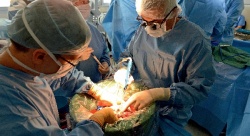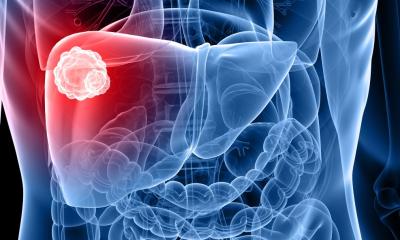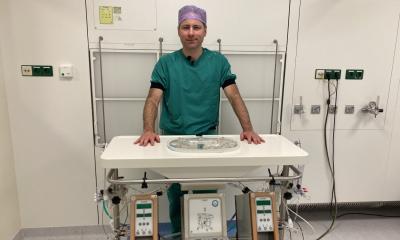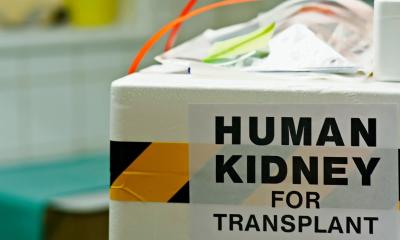France: Transplant surgeons perform outstanding feats
Simultaneous surgical successes open new perspectives for multiple transplants


Three exceptional transplant procedures successfully occurred in France within one month as 2012 neared its end. Two were on cancer patients; the third involved the simultaneous transplant of five organs of the digestive system. At the CHU (University hospital) or Rennes (western France) the head of the biliary-hepatology department Professor Karim Boudjema performed ex vivo surgery on a 64- year-old woman suffering liver cancer. The tumour being quite large (60% of the liver), the liver had to be removed from the abdominal cavity, refrigerated and placed under extra-corporeal blood circulation. First, the damaged organ had to be removed, with a sectioning of arteries and veins while the patient was connected to a blood circulation device outside her body. Then the work was centred outside the body and the cancerous area of the organ was removed. Finally, the organ could be re-transplanted. The whole procedure took around 11 hours, involving 15 members of staff.
This was the fifth surgery of its kind in 10 years in France. Compared to some 3,000 ‘classical’ liver cancer operations conducted in vivo, inside the body. ‘In France we are the only ones able to do it because our centre has both surgery and liver transplant specialists,’ Prof. Boudjema explained, adding that this type of surgery has been performed once in the United Kingdom and once in the USA. The ex vivo technique is necessary when the tumour has invaded the arteries and the veins, which must be reconstructed, and when more time and accessibility to the damaged organ is necessary. The liver has to be extracted and refrigerated and maintained at a temperature of 4°C, to avoid asphyxia during this lengthy procedure. ‘It would have been impossible to do that job, which took two and a half hours, inside the body’, the professor explained. Coincidentally, another exceptional surgical procedure took place at the same time in a public hospital in Marseille, South of France, on a woman patient with bone cancer (sarcoma) localised in the hip, which was reconstructed using part of the patient’s thigh bone.
‘Only a handful of such procedures have been performed in the world’, the hospital management stated. It was the only solution available for this patient to eradicate the cancerous lesion. ‘The success of the procedure proves that it’s possible, in certain cases, to treat patients efficiently who up to now could only be offered palliative treatment’, and ‘…at this point, the patient who is in her fifties, shows no complication’, the head of AP-HM (Assistance Publique-Hopitaux de Marseille) announced. The surgery lasted for more than 12 hours. Initially, it was necessary to remove more than 50% of the pelvic bone and retrieve a part of the thighbone. Then the missing part of the pelvic bone was reconstructed, using the removed thighbone section and a prosthesis. The nerves and vessels could all be preserved. Meanwhile, in mid-December in Paris, surgical teams at the Beaujon (AP-HP) public hospital successfully managed a very rare simultaneous transplant of five organs, on a 26- year-old patient suffering muscular dystrophy of the alimentary canal.
The teams of Professor Jacques Belghiti and Professor Yves Panis managed simultaneously to transplant the liver, pancreas, stomach, duodenum and small intestine. During that highly complex operation, four surgeons, four anaesthetists and one intensivist, took turns in the operating theatre over a period of 12 hours. All the digestive medicine departments also participated in the surgical feat. The young man was suffering from a rare congenital disease identified when he was eight years old, which led to a damage of alimentary canal muscles preventing him from feeding himself normally.
Helped by his family, he had survived up to now through parenteral nutrition, but for some time that feeding had become impossible due to a thrombosis of the venous axis. To overcome such a major obstacle, radiologists in Prof. Vilgrain’s department and anaesthetists and intensivists in Prof. Paugam’s department, installed a catheter directly into the vena cava inferior, to enable an intestinal transplant that had become of vital importance. To allow oral alimentation, this transplant case had to include the stomach and duodenum. Since there was hepatic damage because of long-term parenteral feeding, a concomitant liver transplant appeared preferable. Considering the multiplicity of transplants, the surgical team made the decision to conduct a single joint operation of the whole alimentary canal.
Multiple organs removed and replaced
The operation meant a removal of stomach, the duodenal pancreatic block, liver and small intestine, while leaving the spleen to improve the immunological tolerance of a transplant carrying high risks of rejection. The organ retrievals were carried out by the Beaujon surgeons from a brain dead person more than 400 kilometres away. The organs were then transported to Paris in less than three hours and the length of the cold ischaemia was four and a half hours.
The transplant process began with the liver in the usual manner and the revascularisation of the alimentary canal and pancreas. The continuity of digestive function was provided through an anastomosis with the stomach, the extremity of the small intestine being put in ostomy, for a length of more than four metres. The patient recovered well from the surgery and parenteral feeding could be resumed after 48 hours. Soon afterwards, he wished to be fed orally. The success of such an operation opens new perspectives in the field of multiple transplants in adult patients, according to Mrs Mireille Faugère, AP-HP general manager, who congratulated all the medical teams over their spectacular feat.
PROFILE
Born in 1957 in Taher, Algeria, Professor Karim Boudjema heads hepatic surgery in Rennes University Hospital CHU, in western France. He trained at the Strasbourg CHU, internationally renowned for its Research Institute for Digestive System Cancers (IRCAD) founded by Professor Jacques Marescaux. In 2007, Prof. Boudjema participated in a three organs transplant (heart, lung, liver) for a young girl suffering cystic fibrosis. He is the only surgeon in France able to conduct ex vivo transplant surgery, which is one of his team’s specialities. Another, more common procedure, is the auxiliary liver transplant, in which half a healthy liver is transplanted onto a damaged liver area. After a few months, the damaged area becomes healthy and the organ rebuilds itself. This procedure, a world’s first, was conducted a few years ago.
28.02.2013











